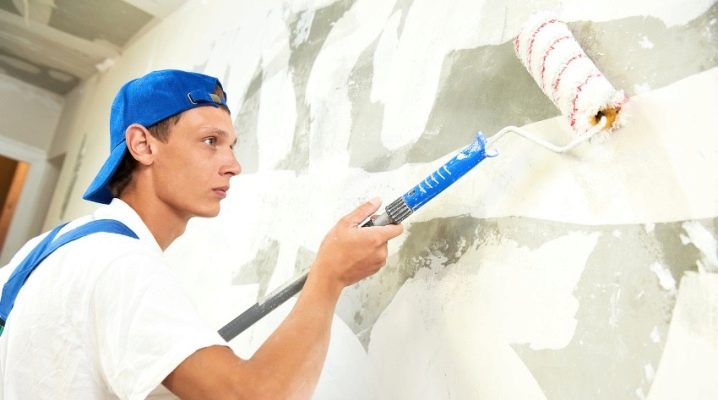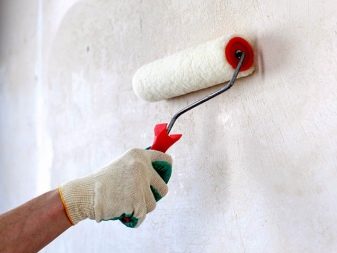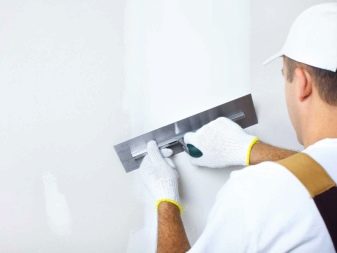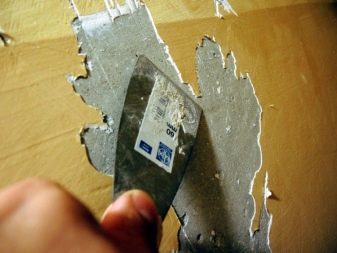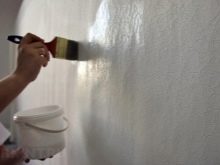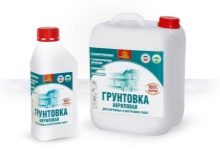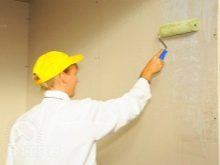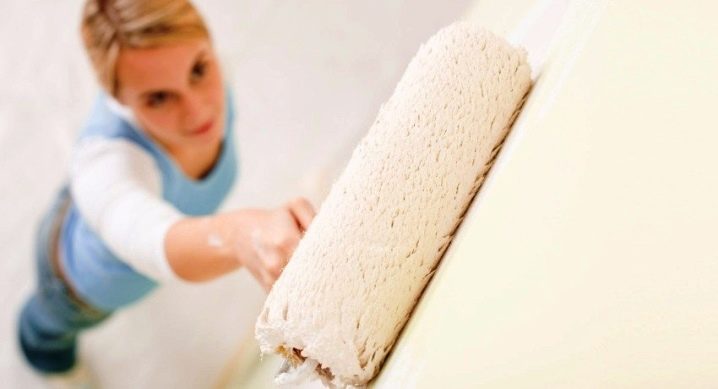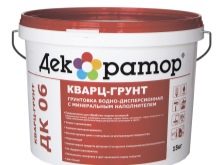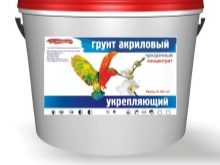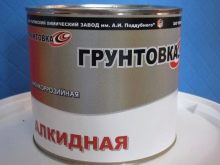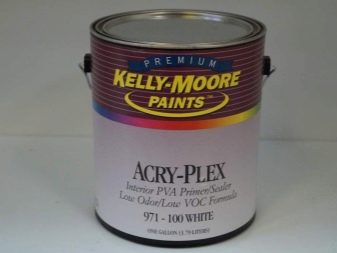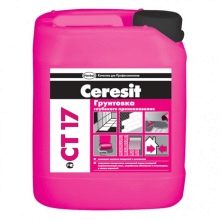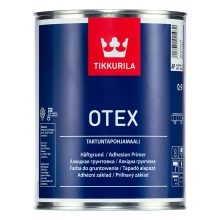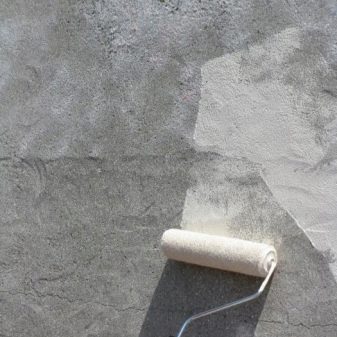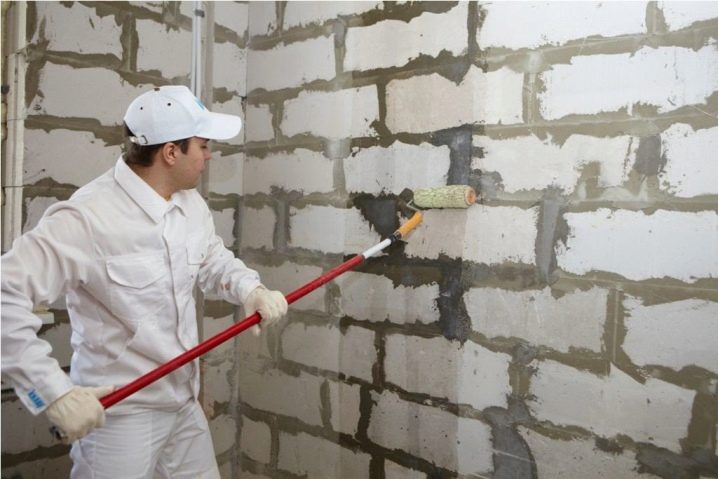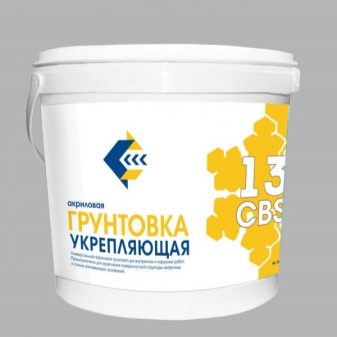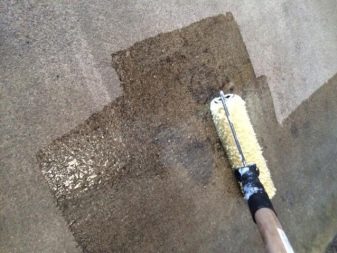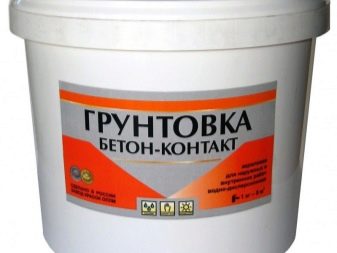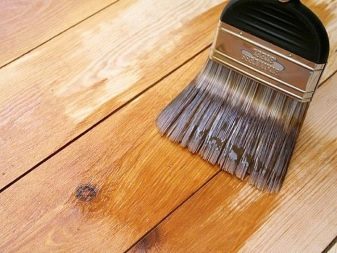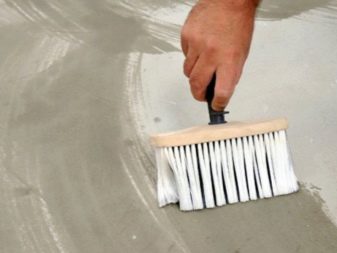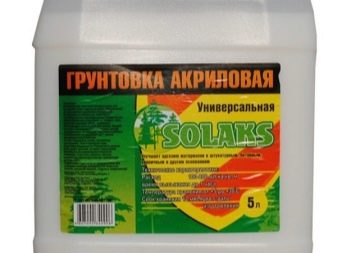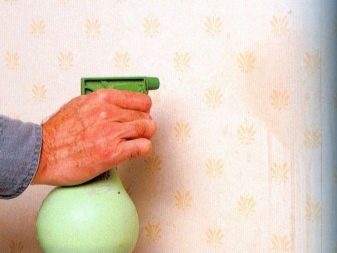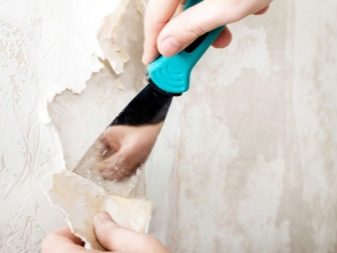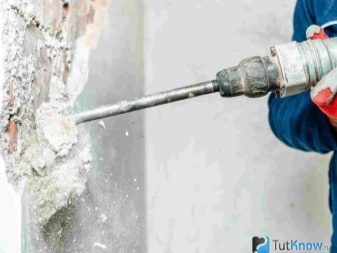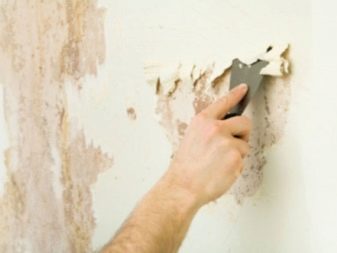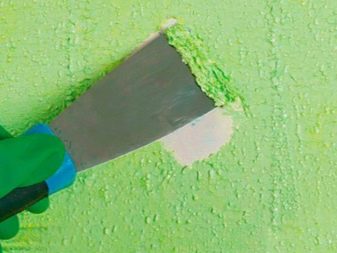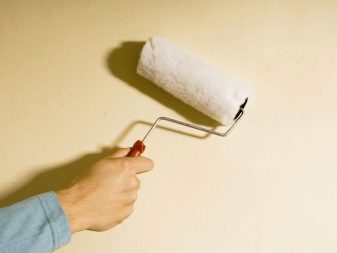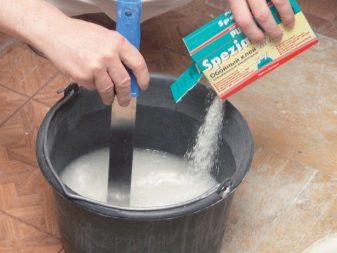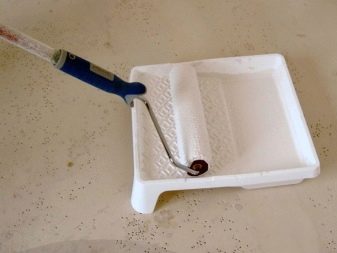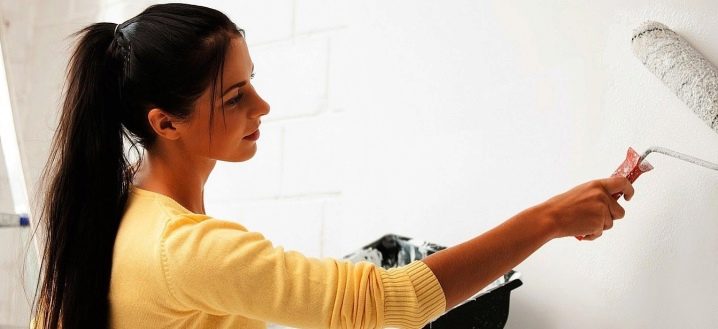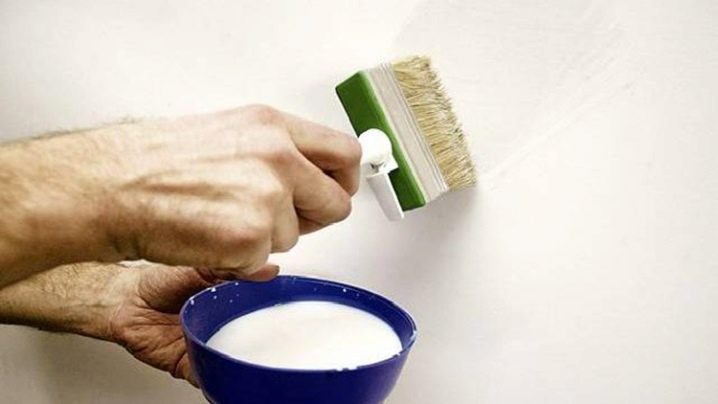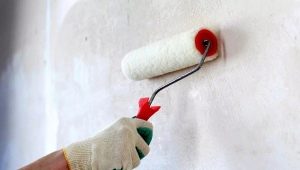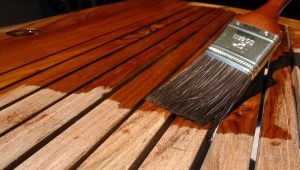Primer walls before putty: how and why to do it?
Apartment renovation is considered a difficult and demanding process, in which it is important not only to create the interior correctly, but also to prepare the surface for decorative decoration. Despite the fact that the processing technology of wooden, concrete, brick and plasterboard bases has its differences, they are united by puttying, which cannot be done without first applying a primer.
This building mixture is used, as a rule, in the case when the coating requires significant intervention. Thanks to priming and puttying, it is possible to eliminate as much as possible all surface defects and make the base ideal for subsequent work.
Features and benefits
The primer is a unique blend made from synthetic and natural polymers.In addition, film-forming elements are added to the composition of the material; therefore, the primer provides strong adhesion between the coating and the decorative layer.
The widespread use of such a building product is also explained by the reliable protection of the finish from mold and mildew. The walls must be primed and in order to provide them with a good impregnation.
This should be done at the initial stage of preparation of the coatings, before leveling. That is, first of all, thoroughly clean the working surface, apply a protective solution and only then begin to putty.
The main advantages of the primer include:
- Strengthening the base. Most coatings such as wood, concrete, brick and drywall have a porous structure that can cause cracks. If they are well primed before puttying, the base will be impregnated with a solution and turned into a monolith.
- Increased adhesion. The surface covered with a primer will not crumble and crumble.
- Saving of putty. The pore-filled pores require less processing during leveling.
- Protection of decorative finishes from staining. The primer on the surface of the walls forms a strong and thin film that reliably “closes” access to the main coating. Therefore, rust and colored stains from the previous lining will not be able to proceed through the putty.
- Ease of application. The solution fits perfectly and is evenly distributed over the surface of the walls, so even an aspiring master who has no experience will perform work with him.
Based on the above, we can conclude that the use of a primer before puttying is necessary, since it improves the quality of the finish and increases the service life of the coatings.
Main types
Before starting repairs in a house or apartment, it is necessary to study well the condition of all types of surfaces and, on this basis, to draw up a detailed construction plan. Regardless of what kind of decorative material will be used in the future, the base should be primed and smoothed with a putty.
Today there is a huge choice of mixtures that can be used for certain types of coatings, as they differ in individual properties and characteristics. By the presence of the initial components of the primer is:
- Mineral. It is made on the basis of cement. This mixture is ideal for the treatment of concrete, brick, block and expanded clay base.
- Acrylic. The main element is considered an acrylic copolymer. This primer is an environmentally friendly product, odorless, dries quickly and is used for all types of coatings. An exception to its application can only be metal bases, which under the influence of the solution are susceptible to the formation of rust and corrosion.
- Alkyd. Available on special technologies, thanks to which the material reliably protects the coating from damage and deformation. The basis of such a primer includes chromate and zinc phosphate.
- Polyvinyl acetate. It is characterized by a narrow range of use, dries quickly.
- Perchlorvinyl. Universal primer, suitable for all types of substrates. The mixtures contain toxic substances; therefore, it is not recommended to be used in rooms with high air temperature, as vapors harmful to health are possible.
- Mixtures based on PVA glue. Possess high adhesion, well strengthen the base, increase its water-repellent properties.
In addition, the primer may vary in scope, depending on the purpose, classify the following types of mixtures:
- Deep penetration. It is considered ideal for processing porous and immaculate walls, as it is capable of impregnating the base a few centimeters deep.
- Firming. This mixture is chosen before plasterboard plastering. It securely fastens the paper layers of the material and makes it durable.
- Adhesive. This type of primer is used for walls, the base of which is glass, plastic or tile. It does not absorb moisture and increases the adhesion of the finishing facing.
- Special purpose. It is used for processing walls to reduce the impact of harmful factors on them.
How to choose?
Any coating that requires decoration should have an ideal base, so it will last a long time and not lose its original appearance.Therefore, the walls must be grounded before the design, and then putty is applied to level the surface.
This procedure is also performed in the case when it is necessary to replace the old finish with a new one. To achieve the maximum effect of priming, you should carefully check the condition of the walls. If they are covered with mold, characterized by an uneven and rough surface, then you will have to choose the appropriate type of mixture and carry out a number of measures to eliminate defects.
To date, the construction market is represented by a huge range of primers for brick, concrete and wood coatings, but it is best to give preference to products of proven manufacturers with positive reviews.
In addition, the mortar must be selected depending on the type of surface on which it is planned to apply the decor.
Brick
The walls, the base of which is represented by brickwork, are particularly demanding in decoration, therefore, any of their design is accompanied by priming works. This increases the resistance to moisture, the formation of fungi, mold.
Pre-coating bricks with such solutions can further save putty consumption.
When choosing a building mixture, it is necessary to take into account the fact that it will be different for the processing of silicate and ordinary bricks. In the first case, it is recommended reinforcing primer with high adhesion. If it is necessary to finish the walls, which are placed in wet rooms, solutions with moisture-proof and antiseptic characteristics are chosen. For brick surfaces are considered ideal soil-based mixture of silicone and acrylic. They are eco-friendly, odorless and dry quickly.
A good option for priming masonry are water-dispersion solutions of deep penetration. Such mixtures reliably strengthen the coating and provide good adhesion between the layers. It is also possible to choose mineral primers based on cement and gypsum for brick walls.
Concrete
Concrete coatings are considered the most durable, but in order to increase the life of such a foundation and protect it from the negative effects of external factors, it is necessary to perform priming. It is best to purchase a special primer for these purposes, which is designed for working with concrete. It penetrates deep into the surface structure and strengthens it perfectly. Most often, masters in this case prefer acrylic and insulating mixture based on polyurethane.
After this treatment, concrete walls will not be “afraid” of temperature changes, mechanical damage and exposure to chemicals.
Tree
Wood surfaces are environmentally friendly and natural, but in order to not lose their performance over time, they should be primed. For processing the base you need to purchase waterproof mixture. They will help to avoid corrosion and deformation of the material. Soil for wood is different, but oil and acrylic based solutions are especially popular. They are applied in one layer and ideally prepare the surface for subsequent finishing.
Transparent primer blends consisting of various pigments, resin and glue are also in great demand. They also perform the role of an antiseptic, deeply impregnate wood, protect it from insects, fungus and mold.
Drywall
Recently in the interior there is a finish using sheets of drywall. Before piercing such a surface, it must be thoroughly treated with a medium or low penetration primer. In that case, if the subsequent finishing of such walls involves the use of heavy material, it is recommended to use mixtures with increased adhesion.
The same applies to sheets GCR. They can not only glue wallpaper, but also apply decorative plaster. But to finish securely fixed, the base should be well covered with a primer solution. For this fit both plaster and acrylic mixture.
Preliminary preparation
Priming, like any other type of construction work, involves preliminary preparation of the base, after which plastering is performed, and then the walls are decorated with decorative material.
First of all, an assessment of the condition of the coating is done, then the old finish is necessarily removed and all defects are eliminated.
If the walls were previously covered with wallpaper, then they are dismantled with a scraper or trowel.To simplify the process, you can slightly moisten old wallpaper with water or a special liquid.
At the same time paper wallpapers are simply removed using a soap solution. It is recommended to cut the cloths with high density before starting work in several places and only then soak it with water. After finishing the walls, they wash well and are additionally cleaned from stains, fungus, mold and rust.
In many houses there are rooms where the walls are finished with plaster. Over time, this type of finish loses its attractiveness and requires replacement. Therefore, before choosing a new material for the walls, they should be “freed” from the old plaster and primed. The prepared surface should not have cracks and crumble.. If, however, the previous coating falls off, then it should be removed.
As for painted walls, they also need to be cleaned from old layers. Water-based coatings, as a rule, are removed with a spatula, and oil and enamel paints are recommended to be cleaned only in damaged areas in order to avoid delamination. In addition, the surface before priming must be protected with emery paper.
Plasterboard surfaces are considered the most demanding in finishing, as they are always puttied and coated with primer several times.
To prepare such walls is possible only in the case when their base is dry and has no cracks. At the same time, the gypsum board is first filled with a starting putty, then primed and a finishing layer is applied.
Priming technology
The process of priming the walls is not particularly difficult, the only condition for its implementation is good preparation of the working surface. Therefore, when the walls are perfectly cleaned, you can proceed to their processing primer mixture.
Before starting, you need to prepare not only the solution itself, but also tools such as a brush, roller and tray. As a rule, the consumption of the mixture depends on the quality of the primer and the characteristics of the surface on which it will be applied. I.e, the thicker the solution, the more it will be required.
Prepare a primer according to the instructions indicated on the package. Most often, one part of the powder and three parts of water are taken to make it. It is worth noting that you do not need to immediately dilute the entire primer, because after its full use, you can easily prepare a new portion of the solution. Mix well to a homogeneous consistency.This can be done both manually and with the help of a construction mixer.
The finished primer should be applied to the walls with a roller, and in hard-to-reach places it is recommended to use a brush. The solution should be distributed evenly over the entire surface, leaving no "puddles" and stains. If the drops accidentally hit the door trim, door or parquet, they can be easily washed off with water. Since the putty is starting and finishing, then first start finishing is performed, after which a primer is applied with several layers and the effect is fixed with the second finishing layer.
Approximately 2 hours is given for the drying of the solution of each layer, after which it is possible to continue the work.
Tips and tricks
In order for the priming to pass quickly and leave behind an excellent result, it is important not only to choose the mixture correctly, but also to know the small secrets of the work. To do this, experienced professionals recommend sticking to the following tips:
- Before you start priming, you should inspect the walls and determine their structure. In that case, if the surface is dry and porous, then you will need to purchase a primer with a margin, since the consumption of the solution will be large.
- It is best to coat the walls with a few layers of primer.
- When finishing small areas of the surface, it is desirable to start from the middle of the base to the ceiling, and then proceed to the processing of the lower section. Thus, the process is much faster.
- The surface of the walls must be well soaked, it is necessary to follow. Otherwise, you can compromise the quality of the finish, which will lead to additional costs and a new repair.
- Regardless of the type of decorative cladding, it is best to choose a white primer. This will help to avoid unnecessary colors and shades in the range.
You will learn more about priming the walls before puttying in the following video.
